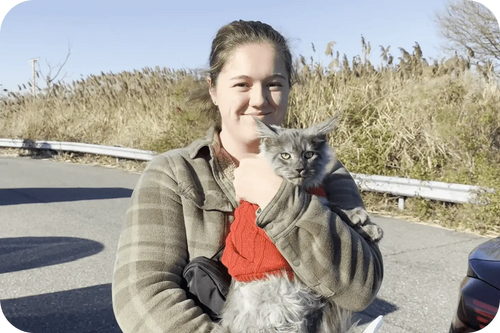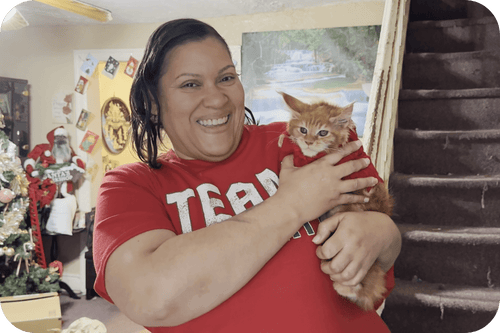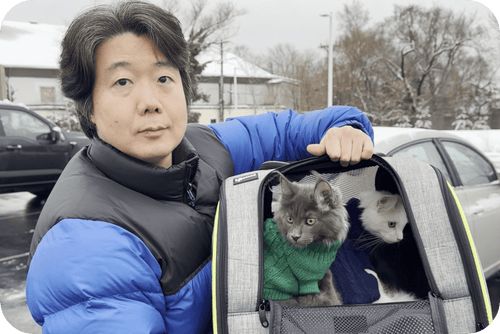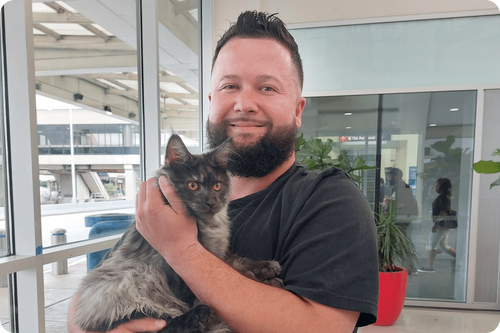How to Introduce Your Kitten to Children: A Soft and Safe Start

There’s something magical about the moment a child meets their new kitten for the first time. The curiosity. The gentle giggles. The quiet awe of a tiny life finding its place in the family.
But before the cuddles and playtime can begin, it’s important to prepare everyone—especially the youngest members of your home—for that first interaction. A few simple steps can go a long way in helping your children and your kitten build trust, safety, and a beautiful bond that lasts for years.
Step 1: Set the Stage Before They Meet
Start the introduction before the kitten even enters the room. Kids are naturally curious and full of energy, and kittens are tiny, sensitive, and still learning the world around them. Preparing ahead of time sets the tone for kindness and patience.
What to do:
-
Talk about how kittens might be shy at first. Let kids know it’s okay if the kitten hides or seems nervous.
-
Practice calm voices and gentle movements together.
-
Use a stuffed animal to demonstrate how to approach a kitten, where to pet, and how to be still.
Why this matters:
Children learn fast, especially when they feel included. These early conversations help them feel like they’re part of the care team—and that matters.
Step 2: Let the Kitten Come to Them
One of the most important things to teach is that trust can’t be rushed. Let the kitten decide when they’re ready to approach.
How to handle the first meeting:
-
Choose a quiet room without distractions.
-
Have your child sit cross-legged on the floor, hands resting in their lap.
-
Open the kitten’s carrier nearby and wait. Let your kitten explore on their terms.
Gentle reminder:
No grabbing. No chasing. No pressure. This quiet moment is your child’s first chance to show kindness through stillness.
Step 3: Teach Gentle Petting
Kittens are delicate. Even with good intentions, kids may be too eager at first. Teaching how (and where) to pet helps avoid accidental overwhelm.
Where to start:
-
Focus on the kitten’s back or sides. Avoid the belly, tail, or paws for now.
-
Pet softly and slowly. No squeezing or hugging.
-
End the interaction if the kitten moves away. That’s their way of saying “enough for now,” and that boundary deserves respect.
A helpful tip:
Short sessions work best in the beginning. Think three to five minutes, followed by a break. Leave them wanting more, not feeling overwhelmed.
Step 4: Always Supervise
Even with the best-behaved children and calmest kittens, supervision is a must during the early days.
What to watch for:
-
Flattened ears, twitching tails, or hiding are signs your kitten needs space.
-
Overexcitement in your child might require a gentle pause and reset.
-
If anything feels off, step in with calm redirection.
Remember:
You’re not just protecting your kitten—you’re teaching your child how to read emotions, respect boundaries, and grow into a thoughtful companion.
Step 5: Build Moments That Belong to Them
Some of the sweetest connections between children and kittens grow through shared responsibility and playful routine.
Easy ways to involve your child:
-
Let them scoop a little food or refill the water bowl.
-
Offer treats for the kitten to nibble from their open palm.
-
Use a feather wand or toy to invite gentle, structured play.
Why it works:
When kids feel useful and trusted, they naturally slow down and become more aware. And when kittens feel safe, they start to seek out that connection.
Common Mistakes to Avoid
These are normal missteps, but knowing them in advance helps prevent hurt feelings or stress on either side:
-
Allowing children to chase or grab the kitten
-
Leaving kids alone with the kitten before trust is fully built
-
Ignoring signs that the kitten wants space
-
Laughing off rough play or teasing as “just being silly”
It’s okay if things aren’t perfect. What matters most is that everyone is learning together—with love at the center of it all.
A Bond That Grows With Time
Your child won’t remember every single moment of these early days, but they’ll remember the feeling. Of being trusted. Of being kind. Of watching a tiny kitten grow into their closest companion.
And your kitten? They’ll remember the soft voices. The calm hands. The safe laps. That’s how home begins to feel real.
In the next post, we’ll guide you through your kitten’s health essentials—from their first vet visit to spotting signs of stress and knowing what’s completely normal in the early weeks.





























































Comments(0)